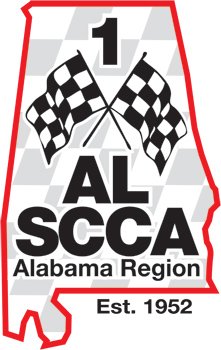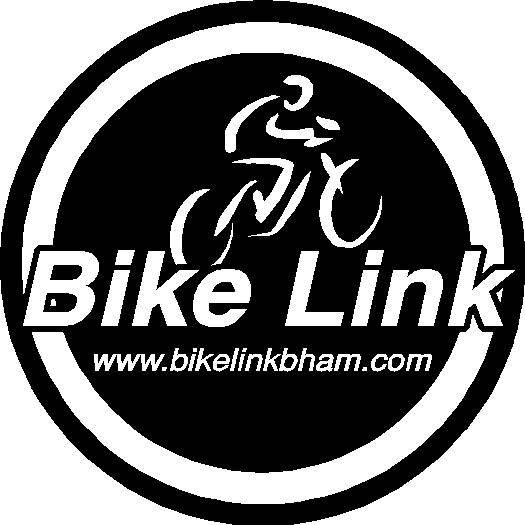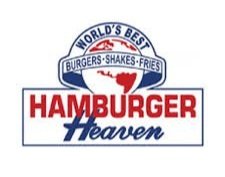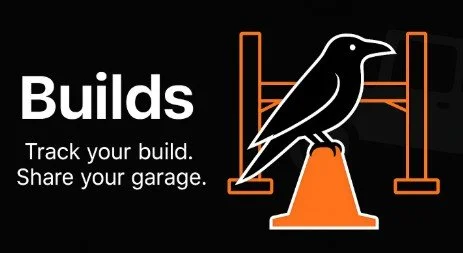Barber Motorsports Park hosts the annual club race and time trials. Photo: @kimbaileyphoto
The ALSCCA recently had the opportunity to interview one of our first club members, a man who has made many significant, positive contributions that have not only impacted motorsports, but the greater Birmingham community. George Barber shared his thoughts and insights with us about the evolution of the world-class museum and racetrack, his love for racing, collecting and working on cars, his take on NASCAR, F1 and MotoGP, and future plans for this motorsports icon.
Mr. George Barber
Part 1: The Early Years and Becoming a Winning Driver
August, 2024. Birmingham, Alabama.
ALSCCA: How did your interest in racing first come about? What really attracted you to wanting to race and be competitive?
George Barber: I loved to work on cars. While I was in the dairy business as a kid, I maintained trucks and loved to work on things, and I continued to do that. And I felt like, if you're going to work on them, you might as well prove that you’re doing well, and that was racing cars. I’ve always been interested in racing, in mechanics and fixing things. I did all of my own work on my cars, and it just happened. I guess that’s the best way to describe it.
ALSCCA: Is there a certain victory or win or moment that stands out for you in all of your years in racing? I know that’s a tough question.
George Barber: Yeah, it really is. You know, I did this for around 10 years, I think. And I just had a lot of experiences and a lot of fun, and golly, I won 63 first place trophies. I was successful at what I was doing and enjoyed it and loved it. And it was an interesting time. Things have changed dramatically since the time I was racing. I remember that if you exchanged paint on somebody or crashed somebody, you'd have your license suspended for a year or so, and now it just doesn't seem to matter. You just crash around. It doesn't matter. So, things have changed a little bit.
ALSCCA: What were you driving in those victories? Any particular brand?
George Barber: Oh, always Porsche. I started off with a Super 90. I raced it for a couple of years and then I bought a Porsche Carrera, a real Carrera, the old Carrera. I raced it for a while and won the Southeastern Divisional Championship with it. And then I bought a 904 and raced it and went to Sebring, Daytona with Peter Gregg. Then I took the engine out of the 904 and put it in an RSK Spyder and raced it for several years. That was the most fun. That thing would fly! Then the Porsche factory offered me a 906. I was really just discouraged with the 904s, a beautiful race car, a beautiful endurance car. But for the type of racing I was doing at the airport, racing around the southeast, it was just heavy and a little awkward. I turned down the 906. The factory offered it to me I think for $11,400. Can you imagine? That car is selling for $4 or $5 million now. I bought a Brabham BT8, an English 2-liter car, and it would fly! I was pretty hard to beat in the Southeast with that car.
ALSCCA: You’re a tall guy.
George Barber: Yeah, I used to be 6’3” but I don't think I am anymore.
ALSCCA: How did you fit in some of these cars? I look at pictures of them and I'm like, he's 6’3”. How did he get in them?
George Barber: There's plenty of room in the in the coupes, the Porsche coupes, and the Spiders. Plenty of room. There’s plenty of room for me. As I say, I was skinny, and I'd fit in these things beautifully. I had no problems.
ALSCCA: Do you have a favorite track that you like to race other than your own?
George Barber: Not really. We raced all over. And I basically had to be in the Southeast because I had to be at work on Monday morning at 8:00 a.m. So, I couldn't get too far away. It was mostly in the southeastern United States. But no favorite track. All of them are my favorite tracks, really.
ALSCCA: What about your favorite driver? Do you have a favorite driver story? An experience you’ve had either with somebody racing or that you raced against, or somebody you went to watch.
George Barber: I guess one of the most interesting things I did in my career was go to Modena, Italy to race with the Taruffi School and we raced, we drove Maseratis and it was a week of school. It was a marvelous experience, just marvelous. That stands out as being a lot of fun. Me with Taruffi and the Maseratis. And driving around in that area was quite an experience; a good teaching and learning experience.
ALSCCA: Do you have any advice for a young person that wants to have a career in Motorsports in any capacity? It could be driving, or track, or support crew. How would they get started?
George Barber: I’d probably start with go karts. And do that because some of those things are really magnificent. I've gotten one and I'm pretty impressed with it. You know the shift to cars are fantastically fast and wonderful. Some of these driving schools probably would be good to go to and get started. The Porsche school we have at our track has a particular class that gives you your license. They really teach you in three or four days everything you could need to know or should know. And then they license you to go forward, I guess with, I don't know if the license is SCCA, but they have a license to compete in the United States.
ALSCCA: I believe it is sanctioned by the SCCA. I did one of the schools out there and got to drive a whole bunch of different Porsches.
George Barber: Yes, it’s a fabulous experience. They're all brand new Porsches and Hurley used to be out there as a teacher. They still do a fantastic job, I think. And of course, all the equipment is brand new and just exquisite.
ALSCCA: I think my favorite was the Cayman.
George Barber: Yeah.
ALSCCA: I like that mid-engine configuration. So yeah, that was good. You're a lifetime member of SCCA, correct?
George Barber: Yes.
ALSCCA: What attracted you to SCCA originally?
George Barber: Well, you had to be SCCA. It was the path to racing that was happening back in the 60s, early 60s. And if you're going to race, you're going to race with SCCA, period.
ALSCCA: What kind of events did you participate in? You did door to door racing, obviously. I assume you did Sprint. Endurance. Anything else besides those?
George Barber: No, mostly the Sprint racing. You know, they're 15, 20 laps, maybe 30 laps long distance racing. It was at Sebring in Daytona, but most of these were just short. What do you call them? Sprint races. In the airport courses and road courses they’d try to do a little bit of everything, everywhere. It was quite an experience.
ALSCCA: Did you ever do autocrossing?
George Barber: No. Well, I might but I don't really remember. Basically no, most of my stuff was racing.
ALSCCA: Do you have any ideas that you would like to see our club, our region, do? Going forward, to help promote the club, improve it and promote it.
George Barber: Not really. Y’all come out occasionally at our track. And for the most part, they're well behaved and have good equipment. I can't think of any improvement right off hand.
ALSCCA: We do a road race at the end of August every year; we have done that for several years. Our autocross program is doing 10 events at the proving ground there this year.
George Barber: Yeah.
ALSCCA: They're allowing us to expand, so we're paddocking or pitting down by the Mercedes garages and then the start line is up at the top.
George Barber: Oh, good, good.
ALSCCA: We’re getting 60-second plus courses out of that place.
George Barber: Good deal. And they get moved around a little bit.
ALSCCA: You’ll have to come out and watch us. I think you’d enjoy it.
George Barber: I will. I surely will. I'll do it.
ALSCCA: We’ve got a lot of new members in their 20s and 30s. The club is kind of experiencing a turnover. And they really don't know the full story of ALSCCA. Aren't we one of the oldest regions? Are you familiar with any of that?
George Barber: It really started here I think in 1960. I probably was one of the first Members and it was just kind of getting going at that time in Alabama. I don't know too much about it other than you had to be a member that was racing and that was just what it was all about. And golly, a long time ago.
ALSCCA: Since you were there at the beginning, that's special and a treasure trove for the club.
Part 2: The Museum and Motorsports Park Development
ALSCCA: Where did the idea come from to do the park? It’s like Augusta for drivers and fans.
George Barber: We started a collection in downtown Birmingham, where I restored milk trucks, our milk trucks, and it grew and it grew, and it grew. And then finally I decided we need a bigger building. So, we got to looking around and found this place near Leeds, but still in Birmingham. And we built this building. I wanted a track to test our restoration motorcycles on. We started designing a little bitty kind of thing, and it grew, and it grew, and it grew. I finally got Dan Gurney, Surtees, Shelby…a bunch of these guys to help me design it. I would call them or send them a picture, and they would suggest things like “open this curve a little bit” or “tighten this corner and move this apex.” It was a fabulous experience. Long story short, it started as a little bitty motorcycle test track that grew into a full blown, really good racetrack. I think it's been very successful. I think people like it. It is very safe. It's interesting, challenging with a lot of elevation changes, a lot of blind curves and we decorate it. We call it the Augusta of racetracks. I think we’ve got 15,000 azaleas and 20,000 crepe myrtles and right now it's exploding with color. People love it. We say it's a beautiful park that happens to have a racetrack in the middle of it.
ALSCCA: That’s a good description. I was out there for Indy. I took a couple of my kids out there and we watched them go around for a while.
George Barber: Oh good! Well, you can move around easily with our tram. And I understand they were pretty full this year. We had a huge crowd, and I didn't want to build stands where you're confined to sitting next to 100 people shoulder to shoulder. I wanted you to be out on the banks and being able to move from place to place, which people will do. And I think it's worked well. There are not many racetracks that are offering the advantages and things that we do.
ALSCCA: From my personal experience, I think you nailed it. I love sitting on the back up under the woods on a rock. And just watching them come through the kink coming out of Charlotte's or the museum and just watch them go down there, you can see most of the track there and then you can see 5.
George Barber: Yeah, and the fun about it is you can move, you can get in the tram and go to the next stop and watch them from there for a minute, then go to the next stop. I think it's fun to be able to do that and not be confined to one little seat.
And two, you probably noticed too, that it's family-friendly and parents feel comfortable in bringing their kids out there, because number one, we don't put up with foolishness. If you're drunk and misbehave, you're history. You're gone. And it's not like people, who you know, go to Talladega. That’s a madhouse. That's crazy. And we don't do that. That's not going to happen at our place. You can bring your kids and turn them loose. And everybody's looking after each other's kids. And there's no craziness. There are no drunks. And you can be assured of that. That makes a difference.
ALSCCA: Yeah, it does. Are you at all surprised with how successful the track has been received and beloved really in our area?
George Barber: Yeah, I had no idea.
ALSCCA: Has that surprised you? The kind of worldwide notice and acclaim for it?
George Barber: Yeah. If you told me some years ago when we first started this, that we have an Indy race, I'd look at you and say you are nuts. But you know we've had them. It's good and they love me. And here, they say, is their second most favorite track and they have to say that because they go to California when they say they have to say it. And in Indy, they have to say Indy is their favorite track. But the drivers all love it. I think it's safe and it's good. That's the main thing. It's safe.
ALSCCA: What are the plans for the future of the track? And I guess I could add the museum as well, that you would be able to share with our members and readers.
George Barber: We have had plans to expand the racetrack. Longer straights, etc. And when we got around to doing it after COVID, the price tripled. It just tripled, and then we were talking about addition to the museum as well. And the price tripled there. So, we're just kind of waiting to see what the hell happens. But no, we have plans to do that and just keep the thing polished. It has to be clean. Our restrooms are spotless and have to be because most people remember going to races and you know what? They remember the filth. The restrooms. Yeah, the terribleness. You probably noticed, I try to hide all my Port-a-Pottys behind black screens and then too, we’re continuing to change them to look like English telephone booths. Have you noticed that?
ALSCCA: Well, I'm a former time trialer, so we did the airports over by Dothan and a couple of hill climbs and, you know, everything's a Port-a-Potty. With your place up there by the proving ground, having that building up there, with the classroom and the washrooms, it gives us an air-conditioned place to sit down and eat our lunch. That’s just really appreciated.
George Barber: Good, good, good. Well, I guess y'all heard about Georgina.
ALSCCA: Well, I was going to ask you about her, but I couldn’t remember her name.
George Barber: Georgina. Somehow, some way, she fell. Not on the track, but she jumped over and her arms went on the track, and they ran over her arms. But anyway, they took Georgina. The winner of the race sat by her, embraced her and loved Georgina. One of the officials at the track came up and said, “Well, you can't put her back because she's dangerous and it makes the track dangerous.” Well, hell, she's going back, I promise you that! And if the officials say that she's dangerous and the track is dangerous, believe me, I do not want anybody racing on our track that thinks it's dangerous, or if it is dangerous, I don't want them racing on it. And so, I said, you know, if you think it's dangerous, go somewhere else. It’s that simple. Anyway, they had such a fun time. Then we heard from Indianapolis officials. Guess what? They want us to bring Georgina up there for their race.
ALSCCA: Lee Diffie and the Canadian Hinchcliffe, they enjoyed the heck out of that once they figured out what it was.
George Barber: Yeah. Yeah. Yeah. Oh, I heard they shut the mics off! They were hooting and hollering so much that they were in the auditorium, and they just had to shut it down because they're hollering.
ALSCCA: I'll tell you a little personal story about Miss Georgina. I didn't know her name at the time. But I'm doing a track day out there and I come whipping around in my GTI, and I'm going from 5 up to the museum sequence. I’m coming under the bridge. And for the first time, I see this woman hanging underneath the bridge. George, I about pooped my pants. I didn't know if it was a suicide attempt. I’m going like oh God, she's going to be all over my windshield. But then as I got under her, I'm like, OK, that's a mannequin. And then of course, the corner is right there. So, I tried to refocus and go through the corners.
George Barber: Well, we've done another one. We've got two little kids that are sitting on the tire wall that goes into the pit in. So, when you come in there, it looks like, oh my God, they're two kids right there and people scream and shout about that. But you gotta have some fun. You gotta have some laughs and people see them and they say, Oh my God, there's kids out there. Then they said, wait a minute, it's OK. And then Georgina always brings a laugh too. It’s fun.
ALSCCA: How did you ever come up with the name Georgina?
George Barber: Well, George and Georgina. The female version of George. And I’m sure you’ve seen the ants. All the waterfalls and the things we've done out there. The lady in the lake. And the spiders. When we were first building this track, this was the question asked. “Why do you have these things?” But anyway, the Cahaba River Society attacked us viciously and said we’re going to ruin the drinking water. We’re going to ruin everything and we’re going to destroy the world. They attacked us personally and they attacked all of us. Just unbelievable. So finally, I got the press to come out here. And we took them all around and showed them all this stuff and I said, you know, they were right. These damn things. You drink this water and look at what happened to them. My God. Huge, huge spiders. And we got a little good press, and everybody laughed about it a little bit and we got our mojo back after the battle with Cahaba River Society. And we finished the track, and now you've probably seen the sign that if you have a Cahaba River Society tag on your car, you're not allowed to come in. If I find you, I'll ask you to leave. And you know I did! And I say to them, look around and tell me if you see an environmental disaster here. It’s bringing people to Birmingham that normally would never come. And you tried to stop that.
George Barber: It really started here I think in 1960. I probably was one of the first Members and it was just kind of getting going at that time in Alabama. I don't know too much about it other than you had to be a member that was racing and that was just what it was all about. And golly, a long time ago.
Part 3: Future Plans and Hot Takes
ALSCCA: I saw an interview that you did about 10 years ago with WBRC here in town. And at that time the track had generated $1.3 billion in economic impact. Would you have a more current number than 10 years ago?
George Barber: No, I really wouldn't. Somebody's got it, but I don’t.
ALSCCA: I figure it's probably almost got to be double that if not more.
George Barber: Well, I think it's done well when you look at the people that are here. The Porsche people do about 100 days a year. Mercedes is here and they have people from all over the United States and Mexico coming to do their thing. So, it may not be a dollar value, but I think when you get Birmingham on the map in a positive way, it’s damn good.
ALSCCA: I worked a motorcycle event out there as a museum volunteer. I worked the cloak room. And there were a lot of people there that were from other parts of the world, let alone other parts of the country. I was quite impressed with that.
George Barber: Yeah, yeah, yeah. It’s unbelievable. It really is to me. You see how many people from all over the world are there? It's, you know, as I say, it's bringing people from all over the world to Birmingham that never have been here before. And right now, I'm having kind of doubts about that because I think Birmingham has enough people in it. I think we could use some beautiful industry, and we've got the Medical Group here that's doing a hell of a job. We ought to be a little bit stingy about our neighborhood and about our cities and say, wait a minute. We're not sure we want another two or 300,000 people to drop in here anyway. That's just being very selfish, I'm afraid.
ALSCCA: We do have a little jewel here. Whenever I bring colleagues or friends here, they are blown away. They just can't believe it. They have no idea. On that note, what do you see happening or what's the next big thing, the future of auto sports and racing from your perspective?
George Barber: I think NASCAR is in trouble. You're not going to sit there for hours and watch them go in a parade around and around. Formula One, I think is in trouble. I don't know. I think you could do the math. NASCAR, if you had three races, each race would be 20 laps and the winner of those three races would do the fourth race. Not the winners but say the first five cars of each one of those would race, and then it's more of a Sprint race and it's more of an excitement than just this grind. Anyway, that's just my thoughts. I'm concerned about it. And I think Moto GP is probably in trouble as well. I don't know where it's going. I think in 20 years they're gonna say what the hell is a motorcycle? But a motorcycle in 20 years is going to be something you get on and it elevates maybe 30, 40 or 100 feet in the air and then shoots off somewhere. We're well funded. The museum is funded by the racetrack, and it's set up for survival. There are so many museums now, and people my age that have collected are dying off. And the kids don't give a damn about these collections. You'll see them all over the United States now going to auction and selling and rolling up, which is a shame. Because the museum, on its own, just cannot make money. It just doesn't. You can't get enough people in there to pay for what you do, but we're saved because of the racetrack.
ALSCCA: This is kind of a closing question but, what's the best interview question that you have ever been asked?
George Barber: Oh Lord.
ALSCCA: You didn't know what you were getting into, did you?
George Barber: I have never been asked a question that was embarrassing or out of place or anything. I have always been treated very nicely and politely.
I worked every summer in the dairy, and I didn't like it at the time, but I'm damn sure glad I did. When my dad died, I knew what the hell was going on. When my dad died, I had to stop racing, or pretty much slowed it down for a couple of years or so and started running the milk business, which was a hell of a lot more dangerous. After 20 to 30 years, we finally sold it to Dean Foods. And I'd never thought I'd sell it because it was a family business. But they offered me so damn much money, I couldn't turn it down. The thing that's so disappointing and unbelievable is that it wasn't but three or four years later that Dean Foods declared bankruptcy. And then Borden’s declared bankruptcy and they just didn't catch on quickly enough about what they needed to do or how they needed to do it. It broke my heart to see that because it could have been so easily turned around and done, but they didn't do it. And I was in the real estate business at the time with the milk business and now I'm in the real estate business here. And of course, the museum. I've got a Marina down South and it’s an exciting time. I’ve been blessed with people. You can't do a damn thing without a lot of people. I tell people all the time you can have all the concrete and all the steel and all the money in the world, but unless you have people, you have nothing. And I've been blessed with people, and you know you can't do it without people. I've got some people around me that are just fantastic. So, as I say, I've been blessed.
ALSCCA: What would you like to say about the racing?
George Barber: Oh, I loved it. Every minute of it. And at the time the officials in SCCA were marvelous and very much into the sport and very helpful. And it's just a wonderful experience, but it changed too. I've got to say that it did change. It came from if you swap paint, you would be suspended until it didn't make a damn 10 years later. Crash. Burn. Whatever.
ALSCCA: This last Indy car race, out at the park you had two drivers there that just banged their way through the field. They didn’t necessarily wreck anybody, but they sure bent some suspension up.
George Barber: Oh yeah. I don’t know, I guess that adds to the excitement and they need some excitement. Most exciting thing that happened for Indy is Georgina.
ALSCCA: What is your opinion of this 2, 3, 2-stop mileage strategy that IndyCar seems to be in love with?
George Barber: Doesn't make any sense to me. It really doesn't. You know the first stage second stage well, NASCAR tried to do that as well. First stage, second stage winners, but still in the same race. I think they just need to continue to experiment and try to get some excitement going. Or I think they're going to be in trouble. But the electric cars I think are in trouble. Have you watched one of those electric races with the Indy electric cars?
ALSCCA: No, I test drove a Tesla when I was looking for new car a year two ago and I decided that this thing was way too smart. It did way too many things. I still drive a manual transmission car.
George Barber: Yeah. Good, good.
ALSCCA: So that's how old school I am. Electrics and hybrids and all that stuff - that's my kids and grandkids future.
George Barber: Yeah, true. And they're going to have to do some major improvements on the battery and length of mileage and what you get out of them. And I'm not an electric fan either. I've got a Honda Odyssey, and it takes me a few minutes to turn everything off. All that automatic ringing. Because some of it's dangerous, I think.
ALSCCA: Yeah, yeah. Some of the safety stuff, I like the backup camera.
George Barber: Yeah, these automatic braking systems, though, I think are dangerous because they don't just slow you down. They slam the brakes on. I could turn that off, but I'm not sure that you can, but I'm going to ask the dealer to see if he can.















